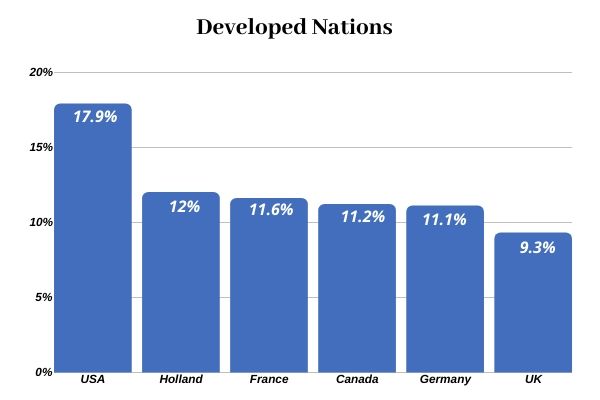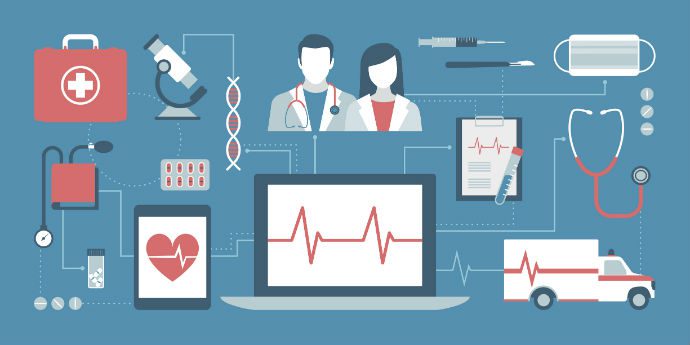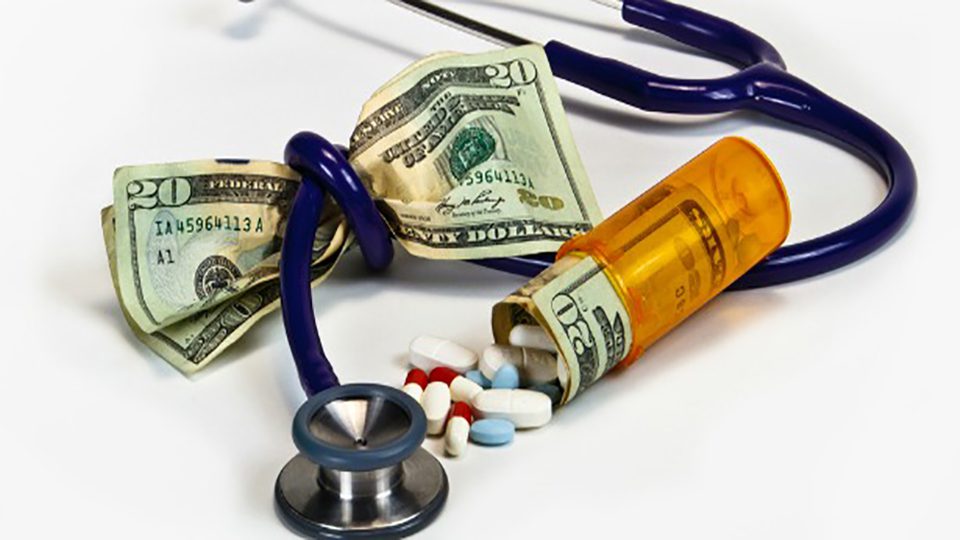
Global Healthcare Spending Statistics
Fastest industrial growth, expanding technological needs, and increasing prevalence of severe disease gave rise to the setup of the global healthcare sector. However, due to the shortage of healthcare facilities and low professional assistance rates, the sector suffered a lot. It emphasizes the need to have a proper and well-established channel of healthcare facilities that can help the people getting cured and treated at the earliest and to maintain a healthy environment. The healthcare department is based on multiple branches that include veterinary healthcare, pharmaceutical drugs, and the medical equipment industry. Many different sectors are all intertwined to form a massive healthcare sector. Furthermore, the prosperity of this sector is based on how governments plan to expand the department and what measures they take to enhance the effectiveness and prosperity of this sector. If you want to get any IT related service like Digital marketing, Web design or security surveillance please visit tvdit.com
Healthcare Facilities Around The World
As per the statistics, healthcare facilities globally have shown the highest rate of improvement. Between the years 2000 to 2017, the global economy increased 1.6x times in GDP per capita around the world. It gave rise to the demand of healthcare facilities along with triggering an increment in expectations people set with the government. A graphical outlook to the increase in healthcare facilities by the leading firm during these years is displayed below: However, not every leading country realized their capabilities and responsibilities to contribute to healthcare sector expansion. Among the many countries the leading one with the best healthcare facility in Canada. The government has maintained a well balanced healthcare facility for its citizens. Let’s take a look at the healthcare facility of the some of the leading countries. The government make all the hospitals secured. You can also get security surveillance in Dubai.
Global Health Spending In Transition
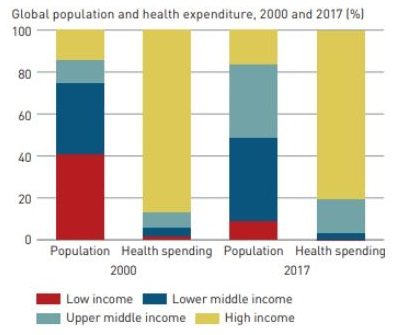
As per the global healthcare report, it is observed that health spending is greater in the high income countries and lowest in the low income ones. Since 2000, the upper and lower-middle-income countries have increased in healthcare spending as compared to the low income countries. The share of global spending reached 19% in both of the two leading layers. The main force to drive this change is the rise in the income growth. See the graph below:
Rise in Government Expenditure in Healthcare
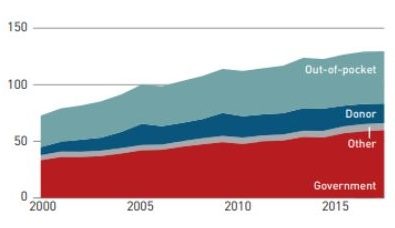
Considering the increased need for improved healthcare facilities, government spending has shown an increment during the recent years. In the year 2017, the spending increased to 60% moving up from being 56% in the year 2000. The Global health spending has shown a 4.3% increment from 2000 to 2017.
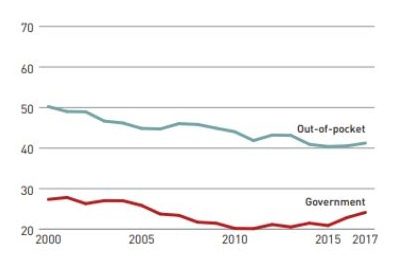
However, as shown in the graph that with the increase of government contribution to healthcare the out-of-the-pocket spending too increased, although the rate got slower, between the year 2000 to 2017.
Out Of The Pocket Spending In High Income Countries
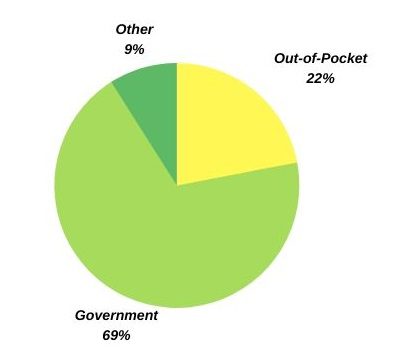
The high-income regions like Netherlands, Germany and Sweden shows least resilient on the out-of-the-pocket spending. These regions mostly rely on the government funded healthcare facilities. Between the year 2000 to 2017, the per capital spending of out-of-the-pocket increased to only US$ 427 to US$ 565. A brief depiction of the out-of-the-pocket trends is depicted in thegraphbelow with respect to the different classes of income.
Healthcare Facilities In Leading Countries
Healthcare In Canada
Canada has always been recommended as one of the best countries to provide the finest healthcare facilities. Having a publicly funded health care system, their expenses vary from province to province. As part of the government of each territory the facilities to vary. However, as per the Canadian Institute for Health Information commonly referred to as (CIHI), the total health care cost was based on 7% of GPD. In the year 2010, the estimated rate increased to 11.7% with the rise in GPD. Furthermore, in the year 2019, the healthcare expenditure raised to $264 billion, or $ 7,068 per person. Not only this, the contribution to the hospital which is at present is (26.6%), physician services (15.1%) and drugs (15.3%) are all expected to increase contributing the largest share in the healthcare sector by the year 2020.
A Comparison of Canadian healthcare Facilities With That of Other Countries:
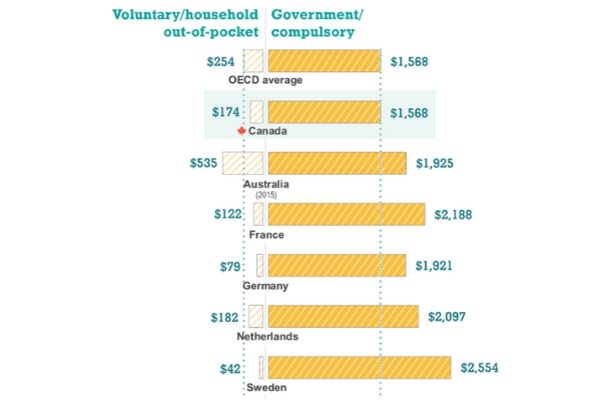
If you compare the healthcare contribution of Canada with those of other countries, you will find out that: (CA$6,448), Netherlands (CA$6,855), France (CA$6,436) and Australia (CA$6,488), Canada is among the leading ones.
Healthcare In The UAE
UAE has a massive, government-funded healthcare sector along with an ever-expanding private sector as well. These two sectors together deliver exceptional services to the citizens. The sector is regulated at both the federal and Emirate levels. The strict laws and rules make sure to provide ample facilities to public healthcare sector. The three prominent authorities include:
- The Health Authority-Abu Dhabi (HAAD)
- The Emirates Health Authority (EHA)
- The Dubai Health Authority (DHA)
The excellence of UAE is evident from the records that the most infectious diseases like poliomyelitis, malaria and measles have now been completely eradicated from the region. The successful healthcare sector has increased the life expectancy to 76.8 years. Moreover, as per the analysis based on how much UAE spends on healthcare sector, it shows that the government is reforming its path to bring modernization in the healthcare sector with the introduction of robotics to take the charge. Spending Dh 4,408 per person, the UAE government do take many necessary steps to spread awareness among people and to maintain a healthy environment. Dr Mohamad Chabuk stated about the development of healthcare sector that, “the increase in cost comes naturally with the increase in demand resulting from the change in lifestyle to a higher level and class.”
UAE Budget Allocation
Since 2007, the allotted healthcare budget by the UAE government has approximately doubled from being USD 6.5 billion in 2007 to g USD 12 billion in 2012.
Spending With Respect To GDP
The healthcare budget with respect to GPD has also been increased to 3.1% in 2012 from 2.5% in 2007.In GCC, the GPD percentage of UAE, which is 3.3%, shows the highest healthcare spending. If you compare it with the percentage of the development countries its much bigger as the UK shows 9.3% and 12.0% in the Holland.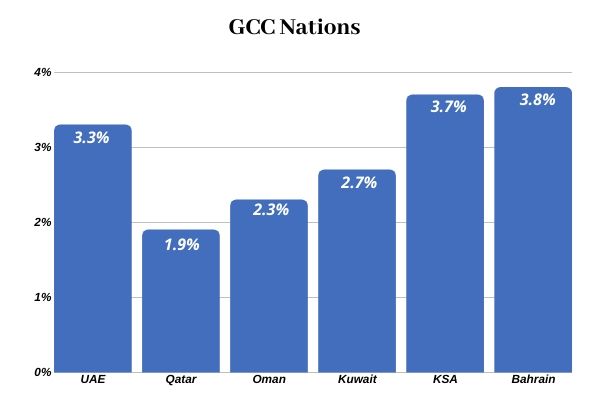
Healthcare in The USA
Evidently the USA is infamous when it comes to improved healthcare facilities. It, being a developed country that could have done a lot but instead the chaos at the government level and lack of significance given to the sector has created much imbalance. On a massive level, Americans rely on private insurance plans that cost them a lot. As per the reports, in the USA the private healthcare expenditure reaches to 3x times higher than the average. Whereas the national expenditure is around $6 trillion. The private healthcare insurance has now reached to $335 billion. Moreover, if you compare the US healthcare stats with those of other countries you will find out that it’s 28% higher than that of other OECD countries. These countries have 50% lower expenses than the USA. Not only this the USA is 5% higher in the total GPD rate as compared to al the OECD countries. And when it comes to the private sector it shows 3 times more increment than those operating in other counties.
Health Expenditures Report
The US healthcare expenditure report indicates the following statistics:
- A Rise in per capita national health spending in the year 2017 reached to $10,739 from 4,855 in 2000.
- The total national health spending increased to $3.5 trillion.
- The National spending as per the GDP increased to 17.9% in 2017 from 13.4% in 2000.
However, the percentage of spending in US hospitals, nursing care and medication are stated below:
- National spending on hospitals increased to 32.7%
- Spending for nursing care increased to 4.8%
- The total expenditure to clinical servicesand physicians increased to 19.9%
- The spending to prescription drugs increased to 9.5%
How Much Should A Person Invest In Healthcare Facilities?
It’s important for a person to prioritize his life and that of his family. You need to act accordingly as the rise in severe disease is increasing. Consider the situation on hand, the rapid outbreak of Coronavirus and the way people are responding to it show it evidently how much carefree people have become. Only a handful of them are truly concerned are taking necessary precautions while the rest of them are busy catching up their routine. So, according to the Bureau of Labor Statistics the out of pocket cost of an average should be around 8% of his annual income. He should spend at least that much of his earnings.
Things To Expect In An International Health Insurance Cover
The international healthcare insurance plan is recommended for those who are living abroad for a certain duration. It is a mandatory policy to have as per most of the governments around the world. There are a few things that should be included in your health cover plan, learn about the aspects below: The Cost of health Insurance Cost
- Payment Method
- Location
- Age
- Optional Extras Needed
Facilities Provided In The Health Cover
- Impatient Care
- Emergency Outpatient Treatment
- Oncology Cover
- Medical Evacuation
Secondary Facilities
- Dental Care
- Outpatient Treatment
The Cost Of An Individual Health Insurance Per Month
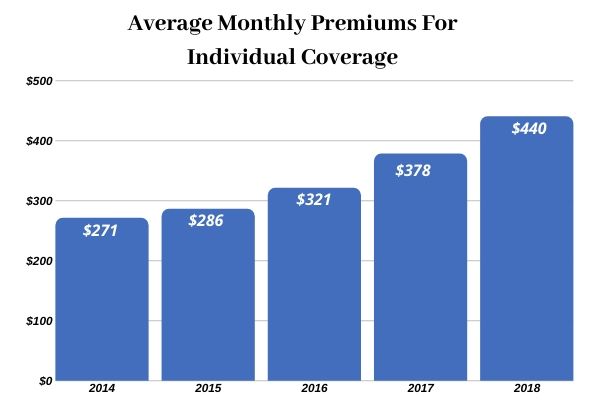
Individual healthcare facility is the service that you have to purchase on your own. However, there is yet another type of insurance, whichis referred as employer insurance in which you pay a certain amount to the company to stay enrolled and this type falls under premium services. The average cost an individual has to make per month could be around $440 based on the type of insurance plan he opt for.
The Cost Of Family Healthcare Insurance Plan
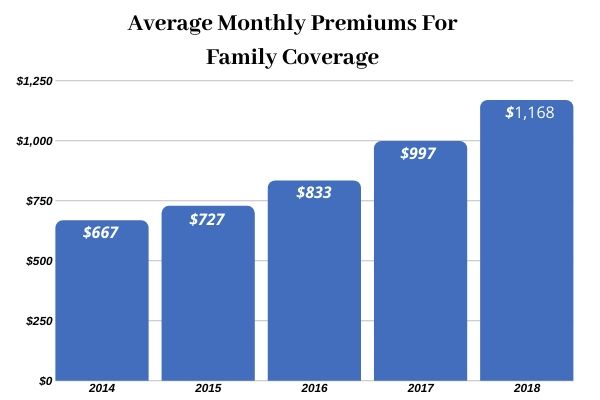
Getting a family cover is vital to make sure that your loved ones stay safe and secured. An insurance plan for the family cover accounts for $1,168 per month in the year 2018, whichsurely must have increased a bit now as well.However, the rates may vary depending upon the members included in your family. Every facility provided in the cover gets altered depending upon the number of family member.
International Health Insurance Report- 2018
The survey carried out by the Pacific prime observed seven major insurers offering basic health care facilities that include:
- Inpatient + Outpatient + Maternity Plans
- Inpatient + Outpatient
- Inpatient
Moreover, both the individual and family cover prices were taken into consideration to calculate the average price of the healthcare expenditure. By pondering on the report, you will find that the country with the highest average cost is the United States charging USD 23,120 whereas Canada shows the lowest charges of $10,361.



